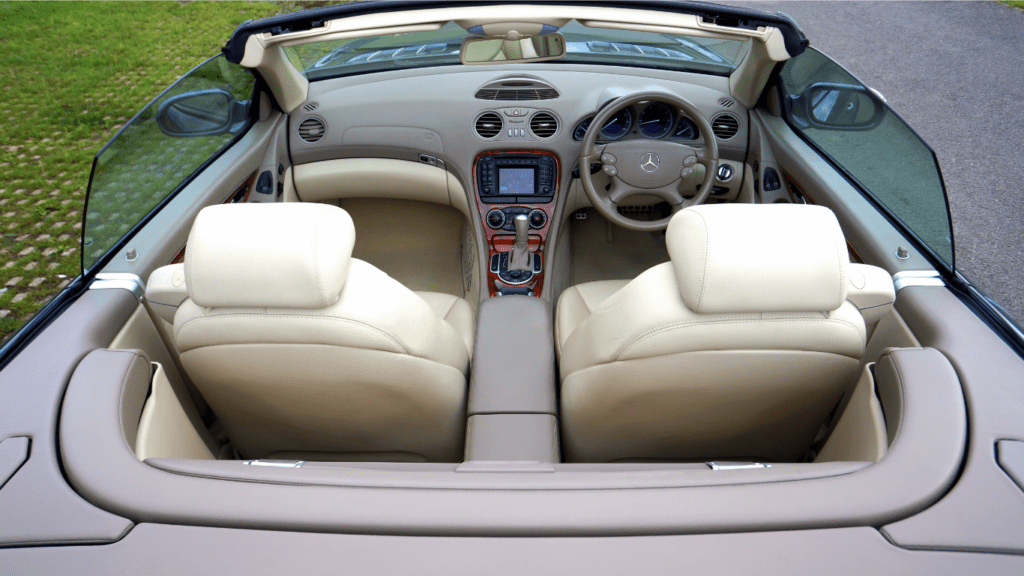Understanding Luxury Car Leasing
Luxury car leasing allows you to enjoy high-end vehicles with lower monthly payments compared to purchasing. When leasing, you’re essentially renting the car for a set period, usually 24 to 36 months. During this time, you only pay for the vehicle’s depreciation, not its entire cost.
Key Terms in Luxury Car Leasing
- Lease Term: The duration of the lease, typically ranging from 24 to 36 months.
- Mileage Limit: The maximum number of miles you can drive per year, often between 10,000 and 15,000 miles. Excess mileage incurs extra charges.
- Residual Value: The car’s estimated worth at the end of the lease term. Higher residual values generally mean lower monthly payments.
- Money Factor: The interest rate for the lease. It’s usually expressed as a decimal and affects your monthly payment.
How Lease Payments Are Calculated
Monthly lease payments depend on several factors:
- Depreciation: The difference between the car’s initial value and its residual value. For example, if a car costs $60,000 and the residual value is $30,000 after three years, you’ll pay for the $30,000 depreciation.
- Interest: This is derived from the money factor. If the money factor is 0.002, it translates to an annual interest rate of about 4.8%.
- Taxes and Fees: Additional costs such as sales tax, registration fees, and any initial down payment.
Benefits of Luxury Car Leasing
- Lower Monthly Payments: Since you only cover depreciation, monthly payments are usually lower than loan payments.
- Latest Models: Leasing allows you to drive new models with the latest technology and safety features every few years.
- Maintenance Coverage: Luxury leases often include maintenance packages, reducing out-of-pocket expenses for repairs and servicing.
- Mileage Limits: Exceeding mileage limits can result in hefty fees, so it’s crucial to estimate your driving habits accurately.
- Wear and Tear: Leases typically include standards for wear and tear. Excessive damage may incur additional charges.
- Insurance Costs: Luxury cars often have higher insurance premiums, which should be factored into your budget.
Understanding these elements helps ensure an informed decision when opting to lease a luxury car.
Benefits of Leasing a Luxury Car
Leasing a luxury car offers several advantages compared to purchasing one outright. These benefits make it an appealing option for many drivers.
Lower Monthly Payments
Leasing a luxury car means lower monthly payments. When you lease, you’re paying for the vehicle’s depreciation rather than its full purchase price. For instance, if a car costs $80,000 and depreciates by $30,000 over a three-year lease period, you’d primarily cover that $30,000. This setup reduces your financial burden, making luxury vehicles more accessible.
Access to Latest Models
Another benefit is access to the latest models. Leasing allows you to drive a new luxury car every few years, ensuring you experience the newest technology and features. For example, if new safety enhancements or entertainment options come out, you’re not stuck with an older model. You can simply lease a newer vehicle and enjoy upgraded features without a long-term commitment.
Maintenance and Warranty
Leasing often includes maintenance and warranty coverage. Many lease agreements cover regular maintenance, reducing out-of-pocket expenses. Additionally, because lease terms usually align with the manufacturer’s warranty period, you avoid most repair costs. For example, routine services like oil changes and brake inspections are often included, decreasing the likelihood of unexpected expenses.
Key Terms and Conditions
When leasing a luxury car, understanding the key terms and conditions helps you make an informed decision and avoid unexpected costs.
Mileage Limits
Most luxury car leases specify a mileage limit, such as 10,000 to 15,000 miles per year. Excess mileage incurs additional fees, typically between $0.15 and $0.30 per mile. If driving habits exceed these limits, expect these charges.
Lease Term Length
Lease terms usually range from 24 to 36 months. Longer leases spread out depreciation and reduce monthly payments but lock you into the agreement for a longer time. Choose a lease term that aligns with your financial and driving needs.
Residual Value
Residual value represents the car’s worth at the end of the lease. Higher residual values mean lower depreciation and monthly payments. Understanding this term helps predict lease costs and plan for potential purchase options at lease end.
Be sure to review these conditions carefully to ensure they match your lifestyle and financial goals.
Steps to Lease a Luxury Car

Leasing a luxury car can be straightforward if you follow a structured approach. Here’s a simple guide to help you through the process.
Research and Compare Models
Start by researching and comparing different luxury car models. Look for features, performance metrics, and reviews to identify options that suit your preferences. Popular models include the BMW 5 Series, Mercedes-Benz E-Class, and Audi A6. Consider fuel efficiency, safety ratings, and technology features. Assess different models’ depreciation rates as this affects your lease payments. By comparing several models, you ensure you select one that aligns with your needs and budget.
Check Your Credit Score
Review your credit score, as it’s a critical factor in securing favorable lease terms. Most luxury car leases require a good to excellent credit score, generally 700 or above. Obtain a free credit report from agencies like Equifax, Experian, or TransUnion to see where you stand. If your score is lower than desired, take steps to improve it, like paying down debt or correcting errors in your report. A higher credit score often leads to better lease offers, lower interest rates, and more negotiating power.
Negotiate the Lease Terms
Negotiate lease terms to get the best deal possible. Focus on the capitalized cost, residual value, and money factor. Aim to reduce the capitalized cost, which is the car’s price, similar to negotiating the purchase price. Verify the residual value is reasonable; higher residual values usually result in lower monthly payments. The money factor, which is the lease’s interest rate, should be as low as possible. Address mileage limits, wear and tear policies, and any fees upfront. By refining these terms, you minimize costs and maximize benefits throughout the lease duration.
Costs Involved in Luxury Car Leasing
Understanding the costs involved in luxury car leasing helps avoid surprises and manage your budget effectively. Here, I’ll break down the key costs you need to consider.
Down Payment
In luxury car leasing, the down payment is the initial amount paid upfront. This can range from $2,000 to $5,000, depending on the model and lease terms. A higher down payment reduces your monthly payments since it lowers the capitalized cost of the lease. Some leases might offer zero down payment options, but these usually come with higher monthly payments.
Monthly Lease Payments
Monthly lease payments consist of several factors. Primarily, these include depreciation and interest. Depreciation is the difference between the car’s initial value and its residual value at lease end. The money factor, which refers to the lease’s interest rate, is also a significant component. For luxury cars, monthly payments typically range from $500 to $1,500, depending on the make, model, and lease structure. Additional charges such as sales tax and lease administration fees could also influence the monthly payment.
Fees and Penalties
Luxury car leases come with various fees and potential penalties. Common fees include acquisition fees (around $500 to $1,000) and disposition fees (approximately $300 to $500) at lease end. If you exceed the mileage limit, expect to pay excess mileage charges ranging from $0.25 to $0.50 per mile. Wear and tear penalties apply if the vehicle shows more damage than considered normal. Finally, early termination fees could be substantial if you end the lease before the contract period ends. Understanding these fees helps you manage costs and avoid unexpected charges.



 Founder & CEO
Founder & CEO
